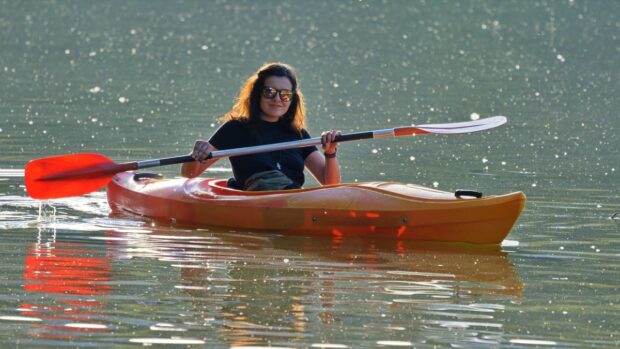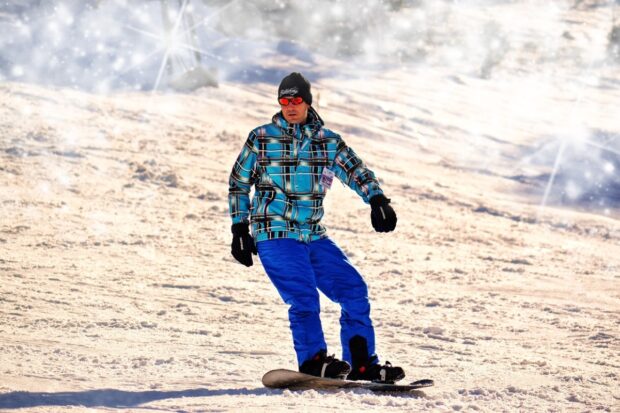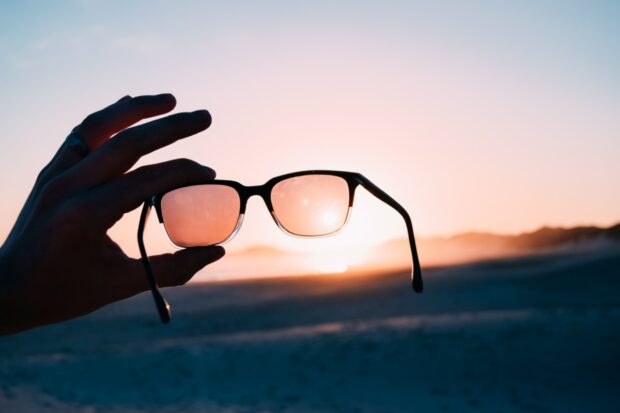How to Choose the Right Polarized Sunglasses for Your Outdoor Adventures
Being outdoors brings a myriad of health benefits, but the glare from the sun can damage your eyes. That’s why picking good polarized sunglasses is essential to your safety and visibility. Polarized sunglasses reduce glare from sunlight and eyestrain. They make it easier to see the conditions in front of you, whether you are skiing, fishing, climbing, hiking, or cycling. These few extra seconds of visibility can prevent dangerous obstacles from ruining your outdoor adventure.

What Do Polarized Sunglasses Do?
There is a variety of outdoor conditions, where you can enjoy the surroundings more effectively if you pick good polarized sunglasses. Light bounces off different angles, like rocks, trees, or an ocean. When the light bounces off an uneven surface, and that light hits you in the eyes, it’s called glare. Polarized sunglasses have chemicals applied to the lenses to filter light and minimize glare.
When Do Polarized Lenses Work Best?
In any situation where you need to see
Polarized lenses are an excellent choice for:
- Golfers,
- Skiers,
- Fishermen,
- Motorcyclists,
- Beachgoers,
- Hikers.
Fishermen can use polarized glasses to help cut the glare from light bouncing off the water. This enables them to see into the water and has excellent success in their endeavors. Tangentially, anyone who has been on a boat can appreciate the glare off the water. A long day on the water can strain your eyes, but polarized sunglasses can help.
Golders can use polarized lenses to reduce glare and see where the ball went. Beachgoers can better watch their environment, see what is happening on the water, and enjoy their time in the sun without squinting in the bright rays.

Snow might indicate cold temperatures and winter weather, but bright sunlight can still bounce off snow and cause a lot of glare. This makes it challenging for skiers and snowboarders to see curves, bumps, or other divots in the run. This is especially true of anyone actively skiing while it snows when conditions get gray, and the filtered sun bounces off the falling snowflakes too. Polarized lenses can make conditions much easier to navigate.
What Color of Lenses to Choose?
There are a handful of lens colors out there, and choosing the right one comes down to knowing the conditions and environment where you plan to wear your polarized sunglasses.
- Brown – Brown lenses are good in everyday conditions. They can help you see better in low-light conditions, like when you are skiing while the sky is gray and it is actively snowing on your face. Brown lenses also enhance contrast so you can more safely see things on the water or the road.
- Blue – Blue lenses are better at improving your color perception while reducing glare. If you are on the beach, skiing in the sun, or out in a bright environment, these trendier lenses can help you cut the glare and see what matters most.
- Green – Green lenses are better for general purposes. They work well to brighten shadows and increase color perception, perfect for hikers on a trail, golfers who need to see what lies in the shadows, and more.
- Grey – Grey lenses are another great option for basic use, as they can increase color perception, minimize glare, and reduce strain while trying to see the road or path in front of you.
- Pink – Pink lenses offer the highest contrast. Pink lenses can improve your depth perception, so they are ideal for people who need the most extended visibility, like motorcyclists and skiers.
- Yellow – Yellow lenses are often best for hazy conditions on the road or in the woods. They are also helpful in filtering blue light from devices, so if you don’t have a blue light filter built in, you can wear your yellow polarized sunglasses to help you unwind at the end of the day.
Tip: If you like to participate in extreme outdoor spots, picking good polarized sunglasses might mean two sets with two different lenses. This can give you sunglasses for everyday conditions, long visibility, or increased color perception. Keeping both sets in your gear bag makes switching a breeze when conditions change midway through the day.

How Can You Tell If Sunglasses are Polarized?
The best way to tell if your glasses are polarized is to look at them head-on, then tilt the glasses ninety degrees. If the lens color changes to black when you tilt them, they are polarized.
Alternatively, if you have an existing pair of polarized sunglasses or an anti-glare screen on your computer, you can hold your glasses up to it. Just like the ninety-degree angle, two polarized screens atop one another will create a black surface.
Conclusion
Overall, picking good polarized sunglasses can help you see more effectively, no matter the outdoor conditions. When you are participating in extreme outdoor sports, your visibility is crucial to your safety. Different colored lenses can give you the tools you need no matter what conditions come your way.
